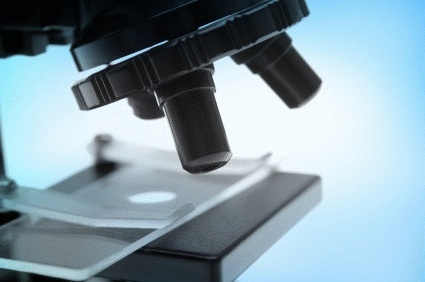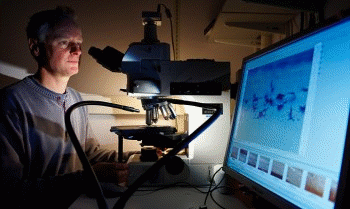 Magnifying small things to view them in greater detail
Magnifying small things to view them in greater detail
Microscopy is the hobby/science of magnifying small things to view them in greater detail.
Microscopy is the technical field/science of using microscopes to view samples and objects that cannot be seen with the unaided eye.
Microscopes are high resolution instruments that are used for observing fine details of very fine objects. Two common types of microscopes are light microscope and electron microscope.
 Scanning electron microscopes, or SEMs, are microscopes that offer sub-nanometer resolution.
This type of microscopes allow to view cells in three dimensions and to probe the inside of whole cells,
obtaining information about organelles and cell structure.
Scanning electron microscopes, or SEMs, are microscopes that offer sub-nanometer resolution.
This type of microscopes allow to view cells in three dimensions and to probe the inside of whole cells,
obtaining information about organelles and cell structure.
Electron Microscopes are scientific instruments that use a beam of highly energetic electrons to examine objects on a very fine scale. Electron Microscopes were developed due to the limitations of Light Microscopes which are limited by the physics of light to 500x (or) 1000x magnification and a resolution of 0.2 micrometers.
In the early 1930's this theoretical limit had been reached and there was a scientific desire to see the fine details of the interior structures of organic cells (nucleus, mitochondria...etc.). This required 10,000x plus magnification which was just not possible using Light Microscopes. An electron microscope is a very large instrument that uses electromagnets for magnification and electrons for illumination. This remarkable instrument was developed by Knoll and Ruska of Germany in 1932 and it was put to use in 1940. It uses very high voltage electricity.
Electron microscope helps in observing sub cellular structures which cannot be seen by means of compound microscope. An internal vacuum is essential for its working. The object must be ultra thin and dry. It is impregnated with some metal to enhance contrast. The image of the object is obtained on a photographic film or screen. Magnification is 100,000 to 500,000.
Thus, Human cells, in general, are up to eight microns in diameter. You can view them in two dimensions under a light microscope, but you cannot see their organelles–cell “organs” –in great detail. Scanning electron microscopes, or SEMs, are microscopes that offer sub–nanometer resolution, allowing you to view cells in three dimensions and to probe the inside of whole cells, obtaining information about organelles and cell structure.